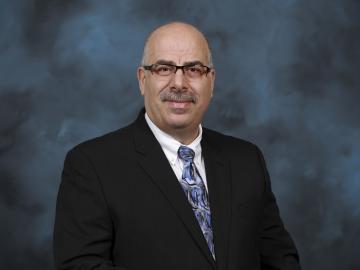
Filter News
Area of Research
- (-) Earth Sciences (1)
- (-) Fusion and Fission (54)
- (-) National Security (79)
- (-) Nuclear Systems Modeling, Simulation and Validation (3)
- Advanced Manufacturing (34)
- Biological Systems (18)
- Biology and Environment (177)
- Biology and Soft Matter (5)
- Building Technologies (12)
- Chemical and Engineering Materials (4)
- Chemistry and Physics at Interfaces (11)
- Clean Energy (522)
- Climate and Environmental Systems (14)
- Computational Biology (6)
- Computational Chemistry (5)
- Computational Engineering (5)
- Computer Science (19)
- Data (1)
- Electricity and Smart Grid (3)
- Energy Frontier Research Centers (14)
- Energy Sciences (5)
- Fossil Energy (3)
- Fuel Cycle Science and Technology (3)
- Functional Materials for Energy (16)
- Fusion Energy (17)
- Geographic Information Science and Technology (3)
- Isotope Development and Production (3)
- Isotopes (35)
- Materials (433)
- Materials Characterization (2)
- Materials for Computing (36)
- Materials Synthesis from Atoms to Systems (13)
- Materials Under Extremes (12)
- Mathematics (1)
- Neutron Data Analysis and Visualization (4)
- Neutron Science (190)
- Nuclear Science and Technology (74)
- Nuclear Systems Technology (1)
- Quantum Condensed Matter (4)
- Quantum information Science (9)
- Reactor Technology (1)
- Renewable Energy (4)
- Sensors and Controls (5)
- Supercomputing (311)
- Transportation Systems (11)
News Topics
- 3-D Printing/Advanced Manufacturing (5)
- Advanced Reactors (8)
- Artificial Intelligence (13)
- Big Data (6)
- Bioenergy (4)
- Biology (6)
- Biomedical (3)
- Biotechnology (1)
- Buildings (2)
- Chemical Sciences (6)
- Climate Change (5)
- Composites (1)
- Computer Science (21)
- Coronavirus (2)
- Critical Materials (1)
- Cybersecurity (19)
- Decarbonization (4)
- Energy Storage (6)
- Environment (7)
- Exascale Computing (2)
- Fossil Energy (1)
- Frontier (2)
- Fusion (23)
- Grid (8)
- High-Performance Computing (6)
- Isotopes (1)
- ITER (6)
- Machine Learning (12)
- Materials (3)
- Materials Science (7)
- Microscopy (1)
- Nanotechnology (2)
- National Security (34)
- Net Zero (1)
- Neutron Science (5)
- Nuclear Energy (32)
- Partnerships (7)
- Physics (2)
- Quantum Science (1)
- Security (13)
- Simulation (4)
- Space Exploration (1)
- Summit (2)
- Sustainable Energy (7)
- Transportation (4)
Media Contacts

ORNL scientists had a problem mapping the genomes of bacteria to better understand the origins of their physical traits and improve their function for bioenergy production.

Every day, hundreds of thousands of commuters across the country travel from houses, apartments and other residential spaces to commercial buildings — from offices and schools to gyms and grocery stores.

ORNL and the Tennessee Valley Authority, or TVA, are joining forces to advance decarbonization technologies from discovery through deployment through a new memorandum of understanding, or MOU.

A new fusion record was announced February 9 in the United Kingdom: At the Joint European Torus, or JET, the team documented the generation of 59 megajoules of sustained fusion energy, more than doubling the

ORNL manages the Innovation Network for Fusion Energy Program, or INFUSE, with Princeton Plasma Physics Laboratory, to help the private sector find solutions to technical challenges that need to be resolved to make practical fusion energy a reality.

More than 50 current employees and recent retirees from ORNL received Department of Energy Secretary’s Honor Awards from Secretary Jennifer Granholm in January as part of project teams spanning the national laboratory system. The annual awards recognized 21 teams and three individuals for service and contributions to DOE’s mission and to the benefit of the nation.

Three ORNL scientists have been elected fellows of the American Association for the Advancement of Science, or AAAS, the world’s largest general scientific society and publisher of the Science family of journals.

ORNL’s Budhendra “Budhu” Bhaduri has been elected a fellow of the American Association of Geographers. The honor recognizes Bhaduri as “a world leader in innovation, development and application of research in human dynamics, geographic data science, remote sensing and scalable geocomputation.”

Moe Khaleel has been selected to lead the National Sciences Security Directorate, or NSSD, at the Department of Energy’s Oak Ridge National Laboratory.

Using novel data sets and computing systems, researchers at ORNL are simulating how climate change affects the safety and security of the country.


